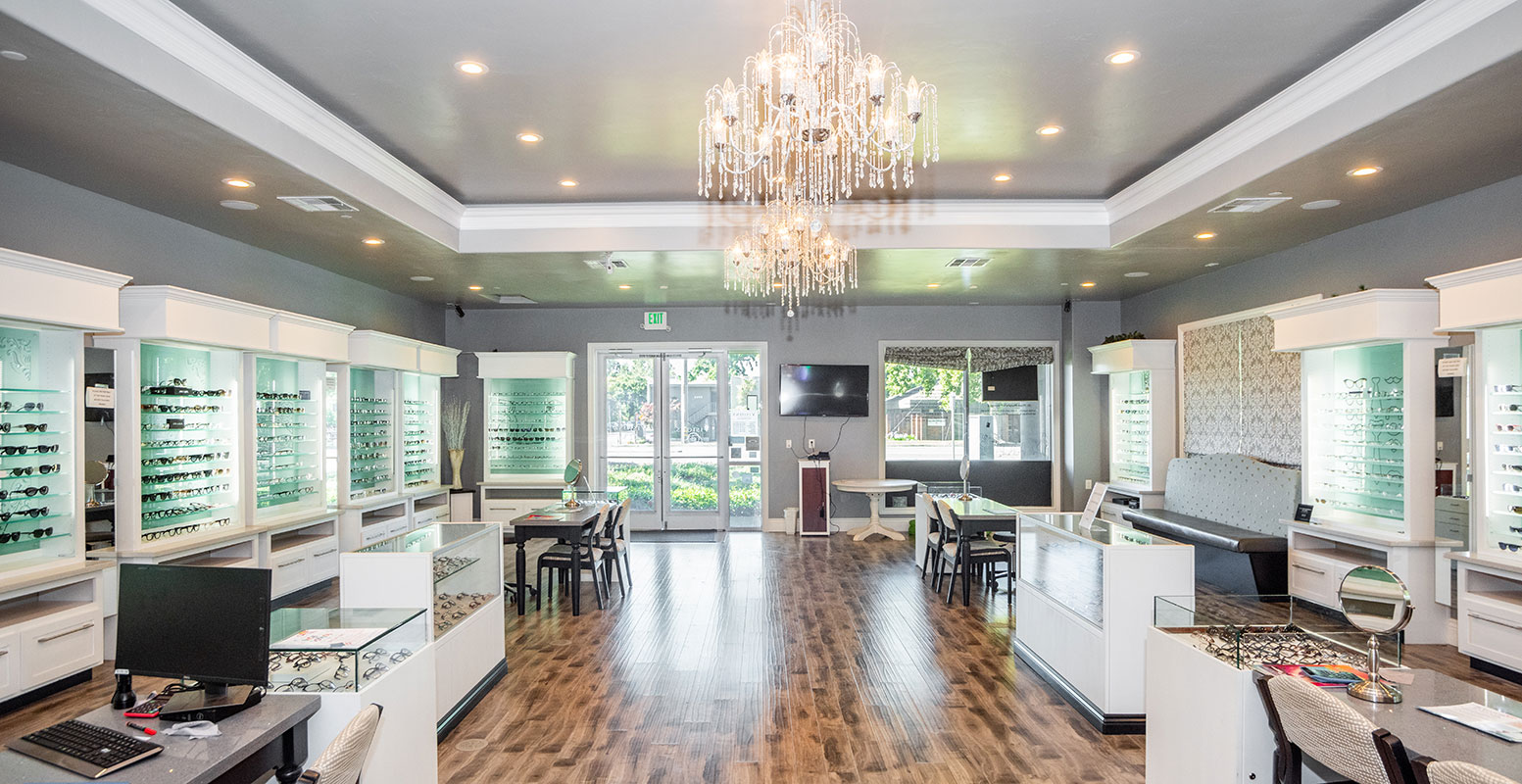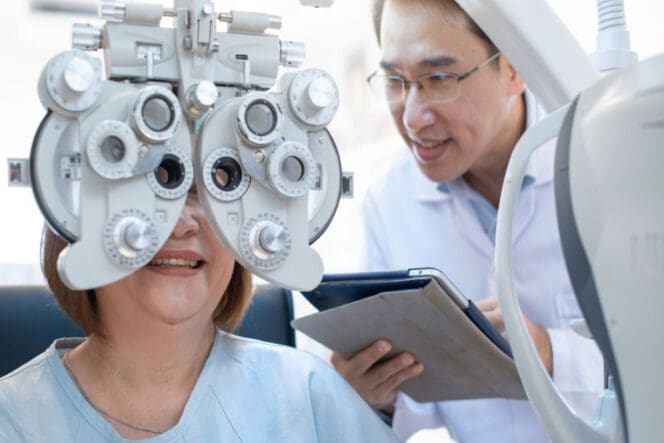Exploring the current Technical Improvements in Optometry and What They Mean for Eye Doctors
From the precision of Optical Coherence Tomography to the nuanced insights used by AI-driven diagnostic devices, these technologies are setting new requirements in individual analysis and therapy. As these improvements permeate the practice, optometrists are encountered with the difficulty of welcoming these devices to enhance patient end results.
Innovations in Diagnostic Equipment
Progressing the field of optometry, innovations in analysis devices have actually changed the way eye treatment professionals analyze and detect aesthetic disabilities and ocular conditions. The previous years has actually experienced significant technical improvements, enabling even more thorough and accurate analyses.
An additional trick development is the intro of sophisticated corneal topography systems, which map the surface area curvature of the cornea with precision. These devices are especially useful for suitable get in touch with lenses and identifying corneal disorders. Digital retinal imaging has transformed typical ophthalmoscopy, offering thorough, breathtaking sights of the retina that facilitate complete aesthetic examinations.
The advancement of wavefront aberrometry has actually additionally been critical, enabling the analysis of refractive mistakes with unmatched accuracy (Opticore Optometry). This modern technology aids in tailoring rehabilitative lenses and boosting surgical results for refractive surgical treatments. Jointly, these diagnostic improvements empower eye doctors to supply superior patient treatment, making certain very early treatment and tailored treatment approaches, inevitably enhancing aesthetic health and wellness results
AI in Patient Management
Structure on the foundation of sophisticated diagnostic devices, the consolidation of expert system (AI) in patient management stands for a transformative leap for optometry. AI systems are progressively utilized to boost efficiency, accuracy, and personalization in client treatment. By assessing vast quantities of data, AI can recognize patterns and predict prospective eye problems, making it possible for eye doctors to customize interventions better. This capability is critical in managing persistent eye diseases such as glaucoma and diabetic retinopathy, where very early detection and continuous tracking are key.
In addition, AI-driven platforms help with structured individual communications and administrative processes. Automated scheduling, digital assessments, and personalized follow-up plans not only improve person fulfillment yet additionally maximize time administration for specialists. These systems can triage clients based on the seriousness of their conditions, ensuring that those in crucial need receive punctual interest.
In addition, AI enhances decision-making by giving eye doctors with evidence-based suggestions and therapy pathways. By incorporating data from electronic health documents, AI tools offer understandings that notify scientific choices, lowering the risk of mistakes and enhancing client results. As AI remains to evolve, its duty in individual monitoring will likely expand, reshaping the landscape of optometric treatment.
Advancements in Retinal Imaging
In the world of optometry, retinal imaging has experienced exceptional technological improvements that are boosting diagnostic capabilities and client treatment. Developments such as Optical Coherence Tomography (OCT) and fundus photography have revolutionized just how eye doctors evaluate the retina and imagine. OCT, particularly, offers high-resolution, cross-sectional photos of the retina, permitting the thorough assessment of its layers. This capability is important for very early detection and monitoring of conditions like glaucoma, diabetic person retinopathy, and age-related macular deterioration.
Improved imaging modalities like OCT angiography are further refining analysis precision. This non-invasive technique maps blood circulation in the retina, supplying essential insights right into vascular wellness without the demand for dye injections. Additionally, flexible optics modern technology is being incorporated into retinal imaging systems to remedy ocular aberrations, delivering unmatched photo clarity. Such improvements promote the identification of minute retinal adjustments that can represent illness development.
Moreover, advancements in expert system are boosting retinal imaging by enabling automatic analysis of big datasets. These systems aid optometrists in identifying patterns a sign of pathology, thus improving analysis accuracy and performance. Jointly, these advancements are changing retinal imaging into a foundation of modern-day eye care, improving outcomes and broadening restorative possibilities.
Teleoptometry's Growing Function
Teleoptometry is increasingly ending up being an essential part of eye care, driven by advancements in electronic communication and diagnostic tools. This is specifically useful in underserved and country areas where access to specialized eye treatment is commonly minimal.
The assimilation of artificial intelligence (AI) further enhances teleoptometry, allowing the evaluation of visual data and assisting in the discovery of ocular problems such as glaucoma and diabetic retinopathy. AI-powered algorithms can swiftly analyze complicated imaging information, providing eye doctors with valuable insights that boost clinical decision-making.
In addition, teleoptometry sustains continuity of care via seamless assimilation with electronic health and wellness documents (EHRs), enabling eye doctors to preserve detailed person histories. When seeking discover here advice from with different specialists., this ensures that individuals get personalized and consistent care even.
In spite of these benefits, challenges continue to be, consisting of guaranteeing information protection and handling client assumptions. However, teleoptometry represents a considerable stride in the direction of more easily accessible, reliable, and patient-centered eye treatment. As innovation advances, its function is positioned to broaden additionally.

Future Trends in Eye Care
A myriad of innovative trends is established to improve the future of eye care, driven by technological developments and the advancing needs of patients. One substantial fad is the combination of fabricated knowledge (AI) in diagnostics, which assures to improve the accuracy and effectiveness of eye assessments. AI algorithms can examine vast amounts of information from retinal pictures, possibly detecting conditions like diabetic person retinopathy and glaucoma earlier than standard techniques.
Moreover, tailored medicine is getting traction in optometry, with hereditary testing notifying customized treatment strategies. This method intends to optimize client results by tailoring interventions to specific hereditary accounts. Wearable technology, such as smart contact lenses, is also coming up, providing real-time tracking of intraocular stress or sugar levels, therefore providing continuous insights into systemic and ocular health.
The fostering of enhanced reality (AR) and digital fact (VIRTUAL REALITY) in training and client education and learning is an additional arising fad. These modern technologies provide immersive experiences that can enhance understanding and abilities both for eye doctors and clients. As these fads evolve, eye doctors must remain abreast of technological innovations to give cutting-edge treatment, making sure better individual end results and complete satisfaction in the dynamic landscape of eye treatment.
Final Thought

Jointly, these diagnostic developments empower optometrists to supply premium individual care, making certain early intervention and customized treatment strategies, ultimately improving visual health outcomes.

As these innovations continue to progress, optometrists need to adjust and incorporate them right into method, eventually enhancing process efficiency and raising the visit the site criterion of eye care delivered to people.